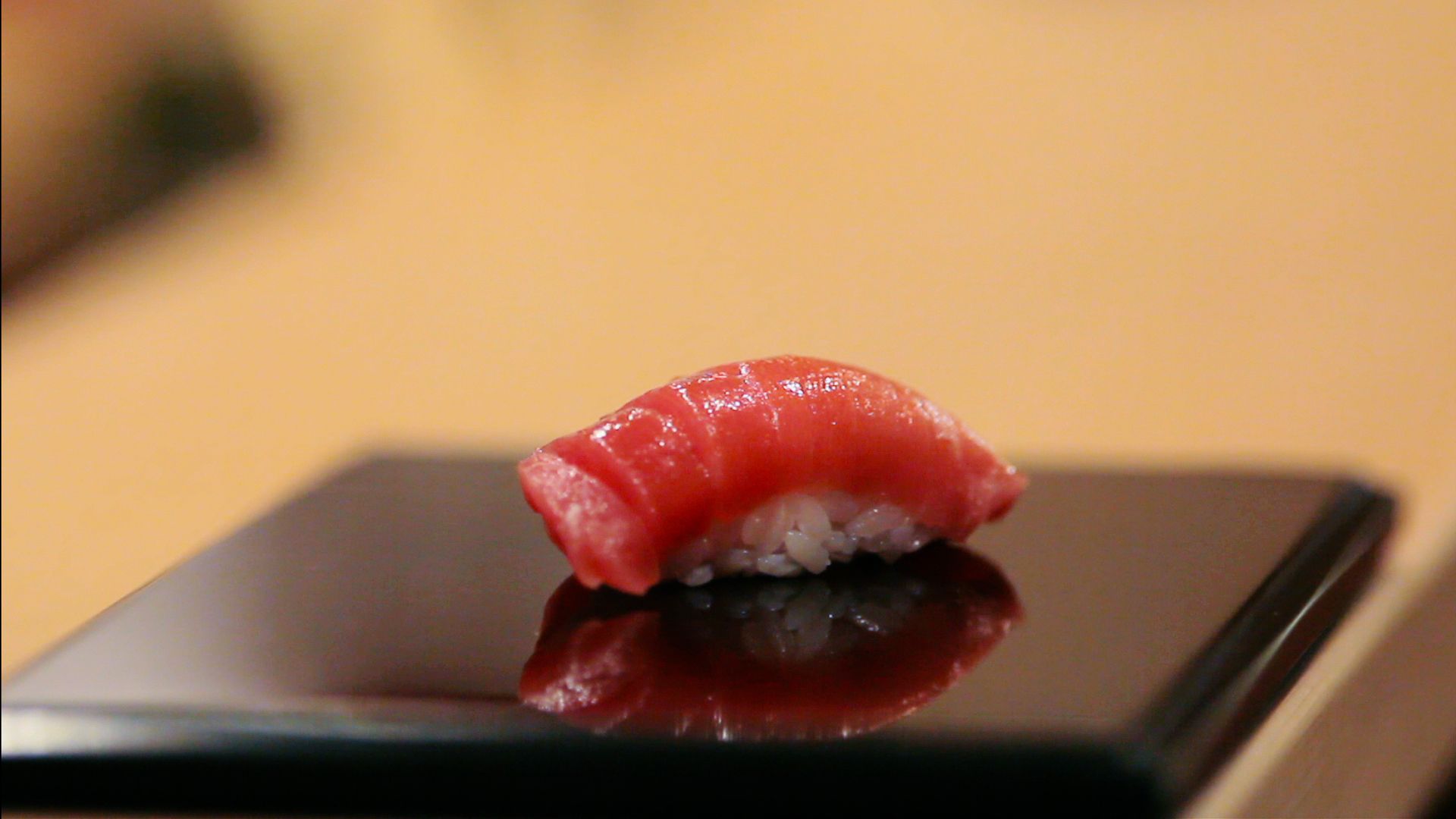I’m a sucker for documentaries about food, so even if I hadn’t started eating sushi on a regular basis recently, I’d still be fascinated by Jiro Dreams of Sushi, Peter Gelb’s documentary that has just come out on DVD this week. The film is required viewing if you care about sushi at all, or even if you just want to drool at beautifully presented food.
The subject in the title is Jiro Ono, an 85-year-old chef who still works almost every day in his sushi restaurant down in the basement of an office building in Tokyo’s Ginza district. His place is modest, with only 10 seats, yet it’s generally considered the best sushi place in Japan (and, by extension, the world). Not just by Japanese people, either — the Michelin Guide has given it their highest rating. The title is explained at the very beginning of the film, as Jiro describes how new ideas for sushi come to him while he sleeps.
The place is for purists, serving no appetizers and only beer and sake to drink. Diners are presented with 20 pieces of sushi, each one a different flavor, served one at a time, in a precise and predetermined order. (Are you getting the sense that this isn’t the sort of place where you can kick back and chat with your friends?) You’re expected to eat each piece as soon as it’s placed in front of you. If you’re interested in dining there, you’ll need a reservation at least a month in advance. Prices start at 30,000 yen, which at current exchange rates work out to almost $400. Everyone who eats there says it’s worth it.
One of the film’s interview subjects is the food critic Masuhiro Yamamoto, who makes a personable guide to the history of sushi and Jiro’s place within it. Jiro himself comes across as a nice old man, though the movie hints that he wasn’t so nice when he was younger. He may be a purist in his own work, but he’s a well-traveled fellow who admits to being in awe of the palette of his friend and enthusiastic fan Joël Robuchon. Jiro’s two sons are also in his line of work: Takashi, the younger son, is already in charge of his own restaurant, while older son Yoshikazu, who’s 50 years old, is still waiting to take over his father’s business. (When we first see him, he’s drying sheets of nori over a hibachi.) This is how things work in Japan, but Yamamoto-san points out that Yoshikazu will have to be even better than his father if he hopes to hang on to the restaurant’s loyal customers. Meanwhile, the younger cooks in the kitchen face a 10-year apprenticeship before they’re even allowed to start preparing food.
The movie addresses the effects of global warming on the seafood supply and Westerners’ preference for toro (fatty tuna) over akami (lean tuna). We also get in-depth talks with four of the restaurant’s vendors. They’re pretty good interviews, too. The DVD extras drill down with them — the rice guy gets technical about the size of grains and the effects of water hardness on the rice that it’s cooked in. The tuna vendor explains his method of determining the quality of a fish — we see him pulling a small chunk of meat from each tuna’s tail and rubbing it between his index finger and thumb while shining a flashlight on it, but only the extras explain why he’s doing that. The halibut vendor demonstrates how he keeps the fish alive while pulling out its spinal cord; it’s not for the faint of heart, or for the vegan. In addition, the DVD has a gallery of Jiro’s sushi.
Even if you have no interest in sushi, the movie is still a neat character study of a man who discovered his purpose early in life and remains fired by it in his old age. Never satisfied with his work, Jiro constantly looks to improve and can’t imagine retirement. We all should find such fulfillment in our work.












